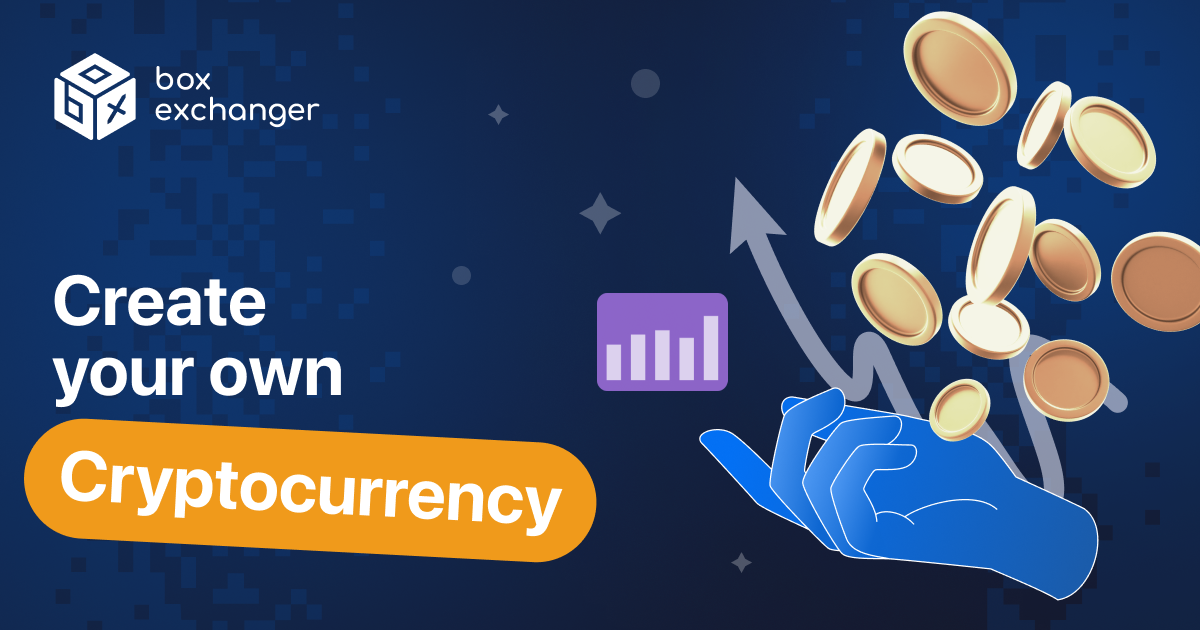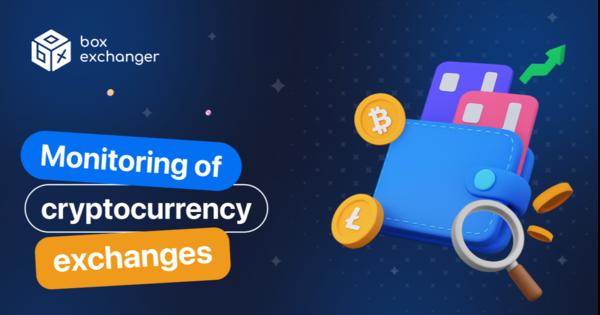7 min.
How to create your own cryptocurrency
Added: November 14, 2024
Updated: June 17, 2025

If you’re interested in crypto, you’ve likely wondered at least once how new coins and tokens are created. In reality, creating your own crypto isn’t as difficult as it might initially seem. It simply requires studying the market and following certain instructions. First, you need to decide whether you want to create a coin or a token. A coin requires its own blockchain, while a token can be created on an existing one. Next, decide on the purpose of the digital asset, and during development, choose the blockchain, consensus mechanism, and architecture.
At first glance, it all seems quite straightforward. But now let’s take a more detailed look at how to create your own cryptocurrency.
Is It Worth Creating Your Own Cryptocurrency?
Before we explore how to create your own cryptocurrency, let’s consider whether it’s even worth creating and why. This question has a straightforward answer. It’s worthwhile if you plan to develop a comprehensive project and manage it actively. You can create your own cryptocurrency out of curiosity, but without establishing its utility and promoting it, it will only serve as a learning experience and little else. Additionally, you could end up spending a significant amount of money without much to show for it.
Therefore, before deciding to launch your cryptocurrency, it’s essential to weigh the “pros” and “cons” and then make an informed choice. We recommend studying the market first and getting familiar with the intricacies and nuances of creating and promoting new coins.
Key Features of Tokens and Coins
Before we move on to the step-by-step guide on how to create your cryptocurrency, let’s discuss the primary differences between tokens and coins. The distinction is simple: coins have their own blockchain. Examples include Ethereum, Bitcoin, and others. Typically, these are useful within a network, implementing staking, transaction fees, governance, and more.
Tokens are built on existing blockchains and can have utility within specific projects. For example, PancakeSwap’s CAKE token operates on the Binance Smart Chain. It can be used for certain actions within the PancakeSwap ecosystem, such as minting non-fungible tokens or participating in lotteries. However, since CAKE lacks its own blockchain, it can’t be used across all BSC applications. The same is true for ERC-20 tokens on Ethereum or BEP-20 tokens on Binance, each serving specific project needs and use cases.
Which to choose: a token or your own coin?
The choice between a token and a coin depends on your goals, budget and ambitions for the project. Tokens are easier and cheaper to create, as they work on the basis of already existing blockchains. It's a great option for quickly launching a project, attracting investors or testing a business idea. Examples include Uniswap (UNI), Chainlink (LINK), and Shiba Inu (SHIB). Proprietary coin requires running a separate blockchain with infrastructure. This is more technically complex and expensive, but gives full autonomy, more flexibility and independence from the limitations of other people's networks. Examples are Bitcoin (BTC), Ethereum (ETH), Toncoin (TON). If you want to launch an MVP quickly and focus on the product, start with a token. If you have a long-term plan to build an ecosystem, it is better to develop your own coin.
Key Aspects of Creating a Cryptocurrency
How do you create your own cryptocurrency, and what are the essential aspects to consider? Creating a cryptocurrency involves several critical factors to ensure a successful and secure project. These include:
- Choosing the appropriate encryption algorithm: This is one of the most important aspects, as it will ensure the network’s security and protect it from hacking.
- Developing a unique cryptographic protocol: This protocol will be used to secure transactions and safeguard user privacy.
- Selecting a consensus mechanism: This ensures data consistency across the decentralized network.
- Defining an inflation model: This model considers both the initial distribution of coins and long-term incentives for miners and network participants. The balance between inflation and deflation is vital to maintaining the cryptocurrency’s price stability.
- Developing a user-friendly and secure wallet: This wallet will store users’ cryptocurrency safely, ensuring ease of use for all experience levels.
- Implementing an effective marketing strategy: Creating an appealing image, attracting active investors, and demonstrating the cryptocurrency’s benefits are crucial for successful adoption.
By addressing all these aspects, you can launch a project smoothly and effectively.
How much does it cost to create my own cryptocurrency?
Creating your own cryptocurrency can cost from a few hundred dollars to tens of thousands, depending on the scale of the project and the chosen path. The easiest and cheapest way is to issue a token on an existing blockchain, such as Ethereum, Binance Smart Chain or Polygon. In this case, the cost can range from $200 to $2,000, including smart contract development, verification and placement. If you want to launch a full-fledged blockchain from scratch, you will need a team of developers, setting up nodes, a test and core network, creating wallets, and ensuring security. Such projects require a budget of $20,000 to $100,000 or more. Additional costs:
- White Paper development - from $500
- Audit of smart contracts - from $1,000
- Advertising and listing - $3,000 to $50,000+
- Legal support - from $2,000
It is important to estimate all costs in advance and plan your budget taking into account the launch, promotion and support phases.
Examples of successful cryptocurrency projects
Analysing real-life examples will help to better understand strategies for launching and positioning cryptocurrencies.
- Toncoin (TON) is a project from Telegram, which became the basis for the TON ecosystem. It is characterised by high speed and compatibility with Telegram bots.
- Shiba Inu (SHIB) - a meme token on Ethereum, which grew to a billion-dollar capitalisation due to the community and successful marketing.
- Arbitrum (ARB) - Tier 2 solution on Ethereum, releasing a token in 2023 with active distribution via airdrop.
- Chiliz (CHZ) - a token built on sidechain, actively used in sports fan platforms. These cases show that the success of cryptocurrency depends not only on the technology, but also on marketing, utility and community.
Steps to Creating Your Own Cryptocurrency
Now let’s go over the steps involved in creating a cryptocurrency. To do this successfully, you need specific knowledge to help you create, launch, and promote your new coin. Here are the main steps:
- Define your objectives: First, determine why you want to create this cryptocurrency. Objectives could range from ensuring payment privacy to creating a new form of currency or even developing blockchain technology.
- Conduct market research: Research the market to gauge interest in your cryptocurrency. Study competitors, analyze their strengths and weaknesses, and develop a unique offering.
- Draft a white paper: Create a white paper outlining your cryptocurrency’s goals, technology, and usage rules. This document will help attract investors and users.
- Choose a blockchain platform: Decide on the blockchain platform where your cryptocurrency will operate. You can use an existing platform like Ethereum or create your own blockchain.
- Create the token: Develop a smart contract for your cryptocurrency’s token. Specify its parameters, such as the number of tokens issued, distribution rules, and voting mechanisms.
- Conduct an ICO or IEO: To raise funds and popularize your cryptocurrency, conduct an Initial Coin Offering (ICO) or Initial Exchange Offering (IEO). This will help secure funding for your project.
- List on exchanges: After conducting the ICO or IEO, listing your cryptocurrency on major exchanges is essential for liquidity and accessibility.
- Promote your cryptocurrency: Develop a marketing strategy to promote your coin. Create a website, launch social media campaigns, and engage partners and investors.
- Provide ongoing support and development: After launching, ensure user support and continuous project development. Monitor market trends and adapt to changes.
By following these steps and investing time and resources into development and promotion, you can succeed in the crypto market and create a digital currency that meets demand and achieves success.
How to Promote Your Cryptocurrency
We’ve covered how to create your cryptocurrency, but now let’s discuss promoting it, which comes with its own set of challenges. Simply registering a cryptocurrency isn’t enough – it needs to attract buyers. Promotion is a crucial step for successfully introducing a project or coin to the market. To capture investors’ attention and increase popularity, targeted marketing and PR initiatives are essential.
Social media is one of the key tools for promoting a cryptocurrency. Posting updates about the project, news, and achievements on popular platforms like Twitter, Facebook, and LinkedIn expands reach. Running ad campaigns, hosting contests, and organizing themed events also boosts audience engagement.
Another effective way to promote a cryptocurrency is by participating in crypto conferences, forums, and exhibitions. Presenting the project to a wide audience of experts and investors helps draw attention and establish connections for future collaborations.
Collaborating with bloggers, YouTubers, and media personalities can also increase awareness among a broad audience. Advertising on popular crypto websites and platforms further attracts new investors.
Monitoring the project’s reputation and engaging with the investor community are also crucial for promotion. Timely responses to inquiries and feedback strengthen the project’s credibility.
An important aspect of promotion is creating interesting and engaging content. Posting news, analytical reviews, video overviews, and other materials increases interest in the project among potential investors.
Legal aspects of launching a cryptocurrency
Creating and promoting a cryptocurrency involves legal risks, especially in countries with developing or tightening regulations. Important to understand:
- Some countries equate cryptocurrency with securities. This means that launching a token requires registration, passing KYC and AML, and disclosure to investors.
- If an ICO or IEO is conducted, it is important to prepare legally competent documentation to avoid claims from regulators.
- Token holders should be informed of the risks. This reduces the liability of the project in case of a drop in value.
Before launching, consult with a lawyer, preferably with experience in cryptocurrencies. This will avoid blockchains, fines and reputational losses.
In summary, successfully creating and promoting a cryptocurrency requires a comprehensive approach using various marketing tools. Consistent interaction with the audience, advertising campaigns, quality content creation, and continuous learning help boost the project’s popularity and attract investors.
The information presented in this article is for informational purposes only and does not constitute financial advice or investment recommendations. Cryptocurrency investments involve a high level of risk, and each investor should conduct their own analysis, assess their financial situation, and consult with professional financial advisors before making investment decisions.
Frequently Asked Questions
Is it possible to create a token without knowing the code?
Yes, there are platforms like TokenMint, CoinTool or Moralis.
Where is the best place to launch a token?
Ethereum (ERC-20), BNB Chain (BEP-20), Polygon, Solana are the most popular options.
How long does it take to develop a crypto?
From a couple of days (token) to 6-12 months (blockchain platform).
Also read

October 26, 2025
How an Automatic Exchanger Works
How an automatic exchanger works — in short: the user selects the exchange direction, the system locks the rate, ac...

October 25, 2025
Exchange Service Monitoring
The market for exchanging digital and fiat assets is huge and dynamic: the total daily trading volume of the crypto...

October 20, 2025
How to attract your first customers to a crypto exchange
Are you launching a new service and wondering how to attract your first customers to a crypto exchange quickly and ...